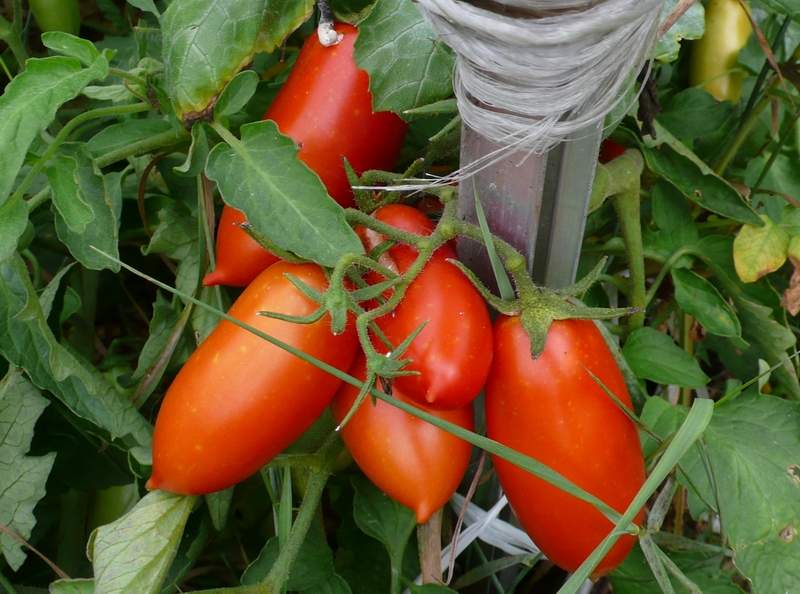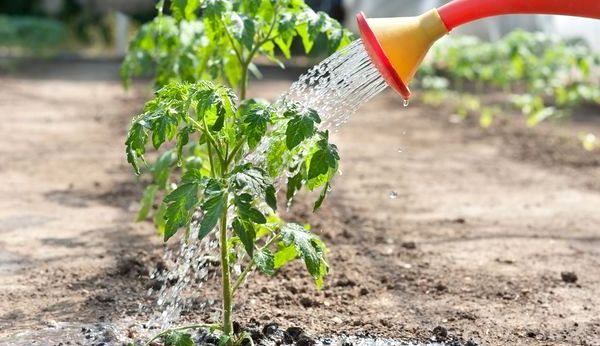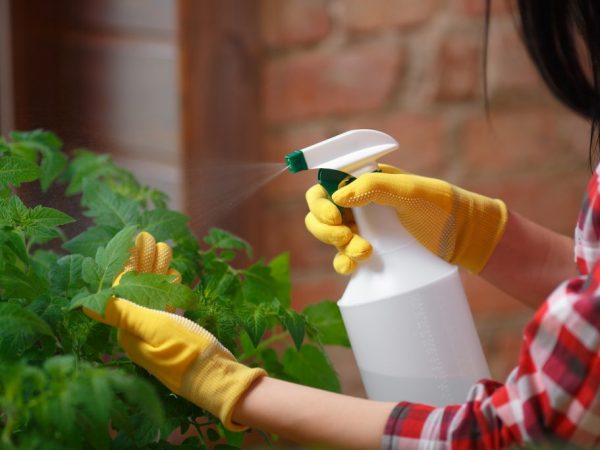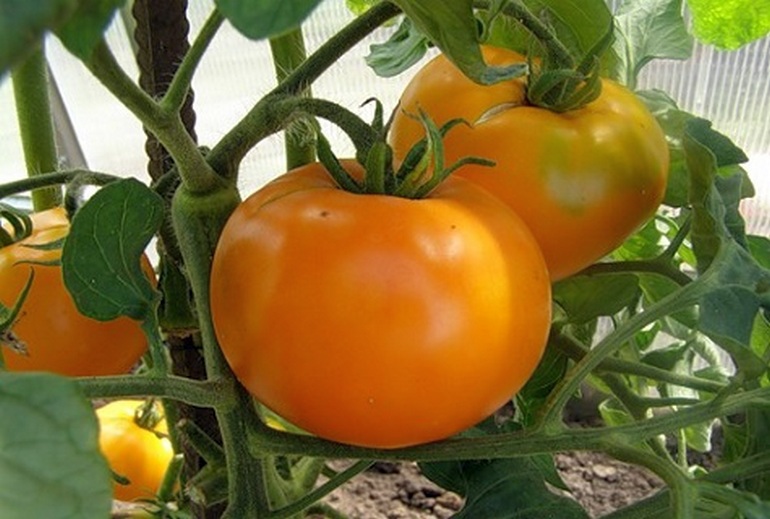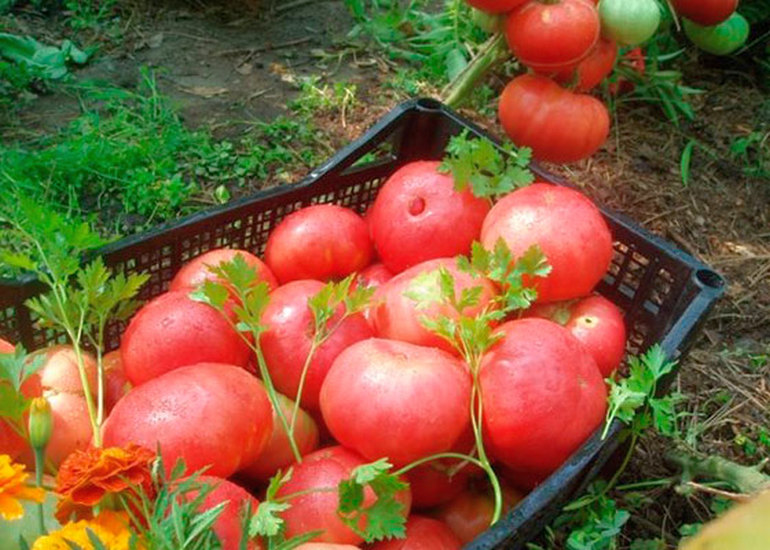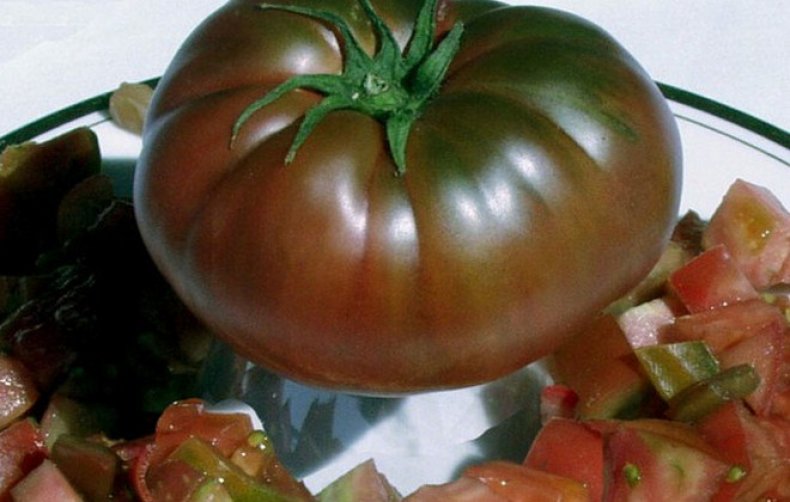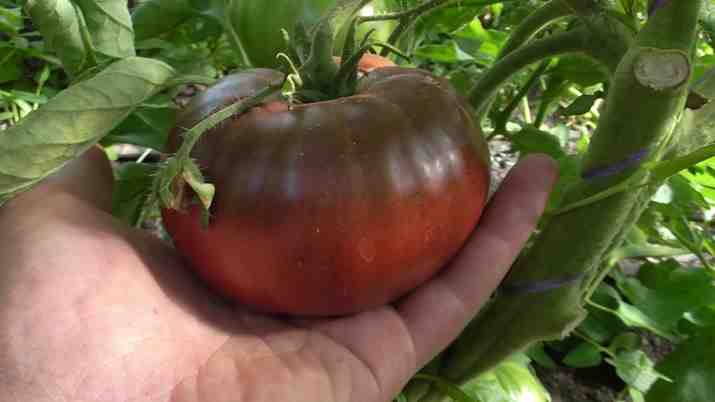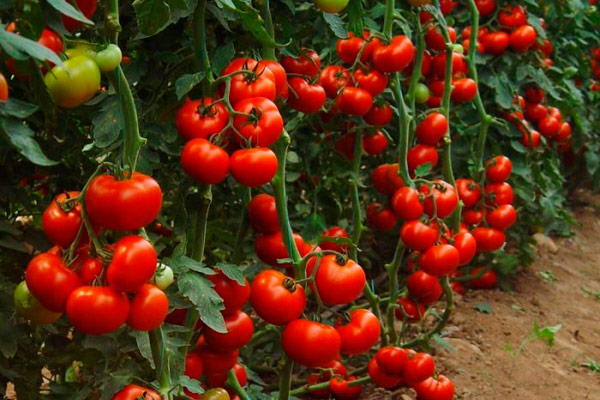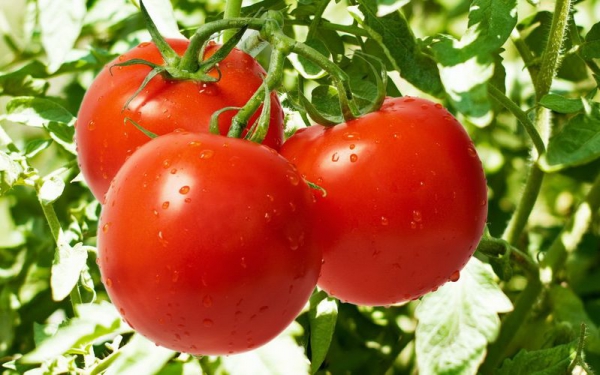Content:
Kaspar tomatoes originated in Norway. In European countries, they appeared recently, but quickly gained popularity, as they have a number of features. This variety is unpretentious, even a beginner can grow it. Resistant to many diseases and ripens early. The main feature is its unusual appearance.
Brief description and characteristics
This variety began to be actively cultivated in summer cottages, vegetable gardens and in greenhouses. Gardeners are attracted by the original shape; the variety looks like sweet bell peppers and an oblong New Year's ball. There is a sharp tip or spout at the end of the fruit.
A short description of the Kaspar tomato:
- The weight of one vegetable ranges from 100 to 120 grams;
- The taste is sweet, with a pleasant tomato sourness;
- The color of the fruit is light green when unripe, red or orange when mature;
- The shape is elongated, oblong;
- The type of plant is small-chamber, the number of nests is from two to three. Seeds ripen in these cells, which are used to grow new seedlings;
- The foliage of an adult bush is dense and abundant. In hot climates, it shades vegetables and protects them from drying out, burns and cracking. In cold or temperate climates, foliage should be thinned to provide the plant with sufficient sunlight;
- Medium early variety. The first harvest is ready by early June;
- The bush of the Kaspar tomato is small. The average height is 1 meter. When grown under film or greenhouses, the bush reaches a size of 120 centimeters, so a garter is required. At low temperatures, the plant stretches no more than 50 centimeters in height;
- The rind is rough and firm. Used for seaming and preparing many dishes. In cooking, the skin is removed from the vegetable;
- The pulp is fleshy and dense, this makes the fruit neat even after peeling;
- The product contains more than 5 percent dry matter, so this species can be transported over long distances.
Biological features of the variety
Unlike other varieties of this culture, this species ripens very quickly. In greenhouse conditions, the fruits ripen after three months, and in the open field - four months. In the southern regions of the Russian Federation, this variety is harvested by summer residents already in early June. Fertility lasts until mid-autumn, although other species finish bearing in August.
Tomato Kaspar F1 is famous for its yield. One bush gives away 1.5 kilograms of fruit, at least 10 kilograms are collected from one square meter with good care.
It is used for any type of preservation, it can be rolled up together with other agricultural products, for example, sweet and hot peppers. The twist of a Casper tomato in its own juice comes out tasty due to its meatiness.
The composition of the product is a particular advantage. The fruits are full:
- sugar;
- beta karatin;
- lekopin.
These substances restore the human immune system, support the intestines and heart.
Growing tips
Caspar is a tomato variety that does not require special soil and seed preparation. Step by step instructions for growing:
- Purchased or self-collected seeds are processed in potassium permanganate (the procedure lasts no more than 20 minutes). Then the seeds are washed and soaked again (a tablespoon of ash and a liter of water are used for the solution). The seeds are in this solution for five hours;
- The seeds are now ready for planting.Planting is carried out to a depth of two centimeters into the ground. Sowing is best started in late March and early April;
- When the first leaves appear, the seedlings are transplanted into pots, into a new prepared soil. The ground is fertilized with superphosphates before the pick. After transplanting, after a short period of time, feeding is repeated several more times;
- The lower ovaries are removed, as they inhibit the development and growth of the plant;
- After 120 days (two months), the fruits ripen. Harvesting takes place from July to September.
Care
Casper F1 tomatoes need standard care: weeding, watering, fertilizing.
Watering
This culture needs abundant watering and loves its regularity. Use only warm, settled water. Everything should be in moderation, abundant watering does not mean that the root system should float in water.
Top dressing
During the entire growth, the plant and soil need microelements. Potassium and phosphorus compounds are suitable as fertilizers. Abundant feeding begins during the first set, and then the gardener calculates the feeding scheme on his own, the main thing is to observe equal intervals of time.
Cropping and weeding
The soil must be loosened after each watering, the entire area must be weeded to remove weeds. During growth, the formed stepsons are stopped, and lateral shoots are also eliminated, especially if the plant is grown in a greenhouse. The bush is formed into several stems. A garter is important, since this crop, due to its high fertility, can lean close to the ground, and the fruits can be injured and begin to rot.
Pests and diseases
Casper tomatoes are a fairly resistant variety to various pests and diseases. Most of all, this variety is affected by aphids and apical rot. This small insect (aphid) can reduce fruiting, and if the plant is not provided with timely assistance, it will die completely.
The best ways to fight aphids:
- the biological substance "Strela" is used against parasites of any type in greenhouses and vegetable gardens, it is also a good fertilizing for agricultural crops;
- ladybugs, hoverflies and lacewing flies well get rid of aphids;
- spraying the bush with wood ash, ash, garlic and soda solutions;
- chemical agents: Fitoferm and Fufanon.
Spraying is desirable to carry out in calm, dry and windless weather and in the evening. The effect of folk remedies is short-lived, so the manipulation will have to be repeated more than once. Chemicals are used one-time and during the period when the formation of inflorescences and ovaries did not occur. Be sure to read the instructions before diluting such funds.
Advantages and disadvantages
This culture has a number of positive factors:
- does not require professional action;
- unpretentious in cultivation;
- with proper care, the fruits grow large, their yield is great;
- the compactness of the bush does not require excessive pinching;
- ripening of fruits is medium early;
- bushes bear fruit until autumn;
- plucked green vegetables are able to ripen on their own;
- amenable to conservation, while not cracking or losing shape after heat treatment;
- transported over long distances, well preserved;
- can be grown in northern and southern regions;
- disembarkation is carried out in greenhouses and open ground;
- with long storage, they retain a presentable appearance.
Negative qualities include:
- dense rind;
- susceptible to attacks of top rot and aphids;
- need a garter.
The description and characteristics of the Kaspar tomato variety allow a beginner to understand all the details and harvest a large harvest. The main thing is to water, feed on time, follow all the recommendations when planting seeds and seedlings. A positive result will not keep you waiting.
